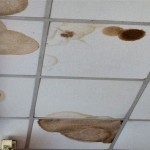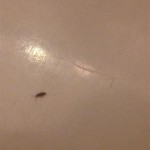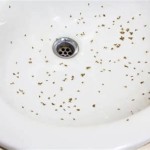Why Does My Bathroom Always Smell Like Sewer?
A persistent sewer smell emanating from a bathroom can be a significant source of stress and discomfort for homeowners. It suggests an underlying plumbing issue that requires prompt attention. Identifying the root cause of this unpleasant odor is crucial for effective remediation. The following article will explore the common reasons behind a bathroom that smells consistently like sewage, detailing potential problems and offering insights into troubleshooting and resolution.
Dry or Defective P-Traps
One of the most frequent culprits behind sewer odors in bathrooms is a dry or defective P-trap. A P-trap is the U-shaped pipe located under sinks, showers, and tubs, designed to hold a small amount of water. This water barrier effectively seals the drainpipe, preventing sewer gases from rising into the bathroom. When the water in the P-trap evaporates due to infrequent use, particularly in guest bathrooms or infrequently used drains, the sewer gases can freely escape, resulting in the characteristic foul odor.
Several factors can contribute to a dry P-trap. Extended periods of disuse are the most common cause, allowing the water to gradually evaporate. Leaks in the drainpipe, particularly around the connection points of the P-trap, can also lead to water draining out faster than it is replenished, ultimately causing the P-trap to dry out. Additionally, inadequate ventilation within the plumbing system can contribute to negative pressure, which can siphon water out of the P-trap. This phenomenon is commonly associated with plumbing fixtures located on higher floors of a building.
Diagnosing a dry P-trap is relatively straightforward. If the odor is intermittent and appears after a period of non-use, this is a strong indication that the P-trap has dried out. Running water down the drain for a minute or two should replenish the water in the P-trap and eliminate the odor. However, if the smell persists or returns shortly after running water, further investigation is required to identify potential leaks or ventilation issues.
A defective P-trap can also contribute to sewer odors. Cracks, corrosion, or loose connections within the P-trap assembly can compromise its ability to hold water, allowing sewer gases to escape. Inspecting the P-trap for visible signs of damage is crucial. If any damage is apparent, the P-trap should be replaced by a qualified plumber. Ensure that all connections are properly tightened and sealed to prevent leaks.
Issues with the Toilet
The toilet is another potential source of sewer odors in the bathroom. Problems with the toilet’s wax ring, drainpipe connection, or venting system can all contribute to the release of sewer gases. A properly functioning toilet relies on a tight seal to prevent odors from escaping into the bathroom. When this seal is compromised, it can lead to a persistent and unpleasant smell.
The wax ring, located between the toilet base and the floor flange, provides a critical seal to prevent water and sewer gases from leaking. Over time, the wax ring can deteriorate, dry out, or become damaged, compromising its ability to create a tight seal. Symptoms of a faulty wax ring include water pooling around the base of the toilet, a rocking or unstable toilet, and the presence of sewer odors. Replacing the wax ring is a common repair, but it requires careful attention to detail to ensure a proper seal. It is crucial to clean the flange surfaces thoroughly and use a wax ring that is compatible with the toilet and flange type. Consider using a wax ring with a horn for added stability and sealing capability.
The connection between the toilet and the drainpipe can also be a source of leaks and sewer odors. If the bolts that secure the toilet to the floor flange are loose or corroded, the toilet may not be seated properly, creating gaps that allow sewer gases to escape. Tightening the bolts may resolve the issue, but if the bolts are damaged or corroded, they should be replaced. Furthermore, the flange itself can crack or break, compromising the seal. If the flange is damaged, it may need to be repaired or replaced by a plumber.
The toilet's venting system plays a crucial role in maintaining proper drainage and preventing sewer gases from entering the bathroom. A clogged or improperly vented toilet can create negative pressure, which can siphon water out of the P-trap or disrupt the seal around the toilet base. Signs of a venting problem include gurgling sounds from the toilet, slow flushing, or the presence of sewer odors after flushing. Addressing venting issues often requires the expertise of a plumber to inspect the vent pipes and clear any obstructions.
Ventilation and Plumbing System Issues
The plumbing system's ventilation plays a critical role in maintaining proper drainage and preventing sewer gases from entering the home. A properly functioning vent system allows air to enter the drainpipes, preventing negative pressure that can siphon water out of P-traps and disrupt the seals around plumbing fixtures. When the vent system is compromised, it can lead to various plumbing problems, including sewer odors in the bathroom.
Vent pipes typically extend from the drainpipes upwards through the roof of the house. These pipes allow air to enter the plumbing system, equalizing pressure and facilitating proper drainage. Common causes of vent pipe blockages include leaves, debris, bird nests, and even small animals. A blocked vent pipe can create negative pressure in the drainpipes, which can siphon water out of P-traps and draw sewer gases into the bathroom. Signs of a blocked vent pipe include slow draining fixtures, gurgling sounds from drains, and the presence of sewer odors.
Inspecting the vent pipes for blockages often requires accessing the roof of the house. It is crucial to exercise caution when working on the roof and to take appropriate safety measures. Using a garden hose or a plumber's snake can help dislodge any debris that may be blocking the vent pipe. If the blockage is severe or difficult to reach, it is best to consult a professional plumber.
In addition to vent pipe blockages, other plumbing system issues can contribute to sewer odors. Cracks or leaks in drainpipes, particularly those located within the walls or under the floor, can allow sewer gases to escape into the bathroom. Identifying these leaks can be challenging, as they may not be immediately visible. Signs of a hidden leak include water stains on walls or ceilings, dampness in the floor, and the persistent presence of sewer odors. A professional plumber can use specialized equipment, such as video cameras, to inspect the drainpipes and identify any hidden leaks.
Furthermore, issues with the main sewer line can also cause sewer odors in the bathroom. A blocked or damaged sewer line can cause sewage to back up into the drainpipes, leading to unpleasant smells and potential plumbing problems. Signs of a sewer line issue include multiple drains backing up simultaneously, slow draining fixtures throughout the house, and the presence of sewer odors in multiple bathrooms. Addressing sewer line issues requires the expertise of a qualified plumber, who can diagnose the problem and recommend appropriate solutions, such as drain cleaning or sewer line repair.
In conclusion, a bathroom that consistently smells like sewer can be attributed to a variety of factors, ranging from simple issues like a dry P-trap to more complex problems involving the toilet, ventilation system, or main sewer line. Thoroughly investigating the potential causes and taking appropriate corrective actions is essential for eliminating the odor and restoring a pleasant environment in the bathroom. Consulting a qualified plumber is recommended for diagnosing and resolving complex plumbing issues.

My Bathroom Smells Like A Sewer What Causes That And How Do You Fix It Kitchen Infinity

Why Does My Toilet Smell Like Sewage 5 Causes Solutions

Unused Bathroom Smells Like A Sewer Causes And Solutions

Why Does My Bathroom Smell Like Sewage Metro Flow Plumbing

Why Does Bathroom Smell Like Sewage Crystal Blue
Why Is There A Sewage Smell In Your Bathroom Howstuffworks

Five Reasons Your Bathroom Smells Like A Sewer The Plumbette

Why Does My Bathroom Smell Like Sewer

What Causes Bathroom Drains To Smell

Smelly Bathroom 4 Tips From Our Bentleigh Plumbers Watermaster Plumbing
Related Posts







